Photos of the Russian Empire: 1860 – 1870
Pavel and Anastasia Khoroshilov’s collection
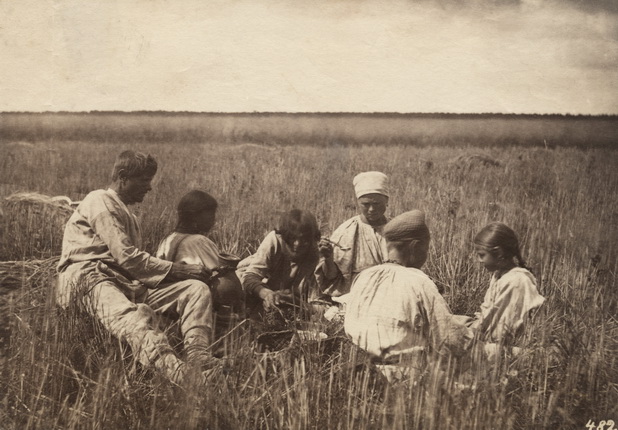
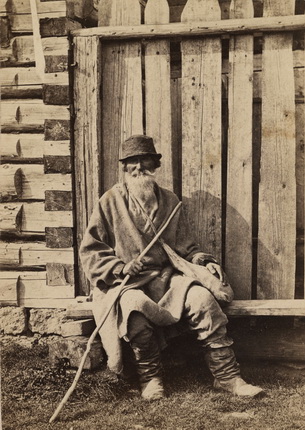
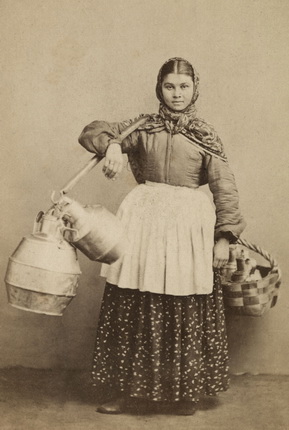
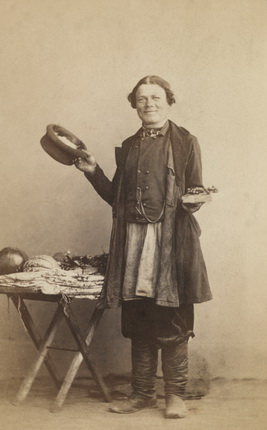
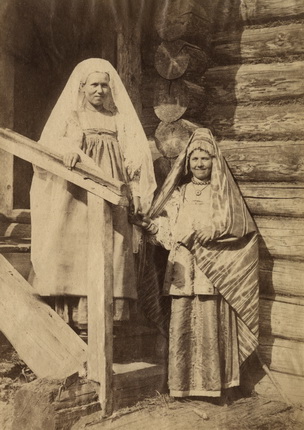
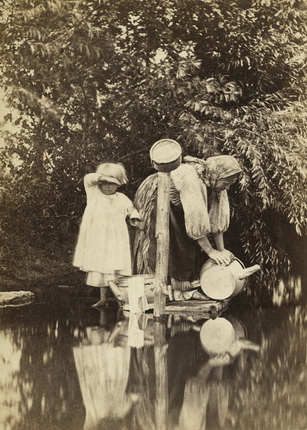
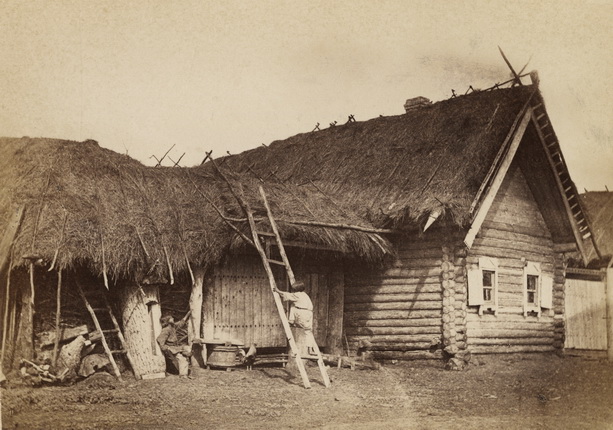
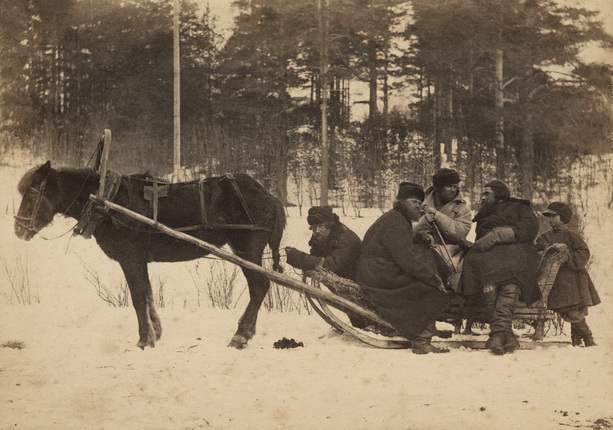
William Carrick. Peasant meal. Simbirsk province. 1871. Albumen print
William Carrick. Petitioner for alms (beggar). 1860-1870s. Albumen print
William Carrick. Milk seller (from the Okhta area). St. Petersburg. 1860s. Albumen print
William Carrick. Fruit seller. Gostiny Dvor, St. Petersburg. 1860s. Albumen print
William Carrick. Girl and married woman in festive costumes. Poretskoye village, Alatyr uyezd, Simbirsk province. 1871-1878. Albumen print
William Carrick. Washing pots and pans. 1860-70s. Albumen print
William Carrick. Village of Medino. Simbirsk province. 1871-1878. Albumen print
William Carrick. Peasants on a sledge. 1876-1878. Albumen print
Moscow, 10.02.2016—8.03.2016
exhibition is over
Share with friends
Curator: Igor Volkov
For the press
As part of the 11th International Month of Photography in Moscow ‘Photobiennale 2016’ the Multimedia Art Museum, Moscow presents ‘Photographs of the Russian Empire 1860s −1870s’, an exhibition by William Carrick, the celebrated Russian photographer of Scottish ancestry.
Like many representatives of the creative intelligentsia in that period, William Carrick (1827-1878) was a ‘man of the world’: born in Edinburgh, he was educated in Russia and spent most of his life there, being addressed in St. Petersburg as Vasily Andreyev, according to Russian custom; he also travelled extensively in Europe and spoke five languages fluently. His handsome appearance, excellent sense of humour and ability to win the favour of new acquaintances paved the way for the future photographer’s brilliant career.
A family of Scottish merchants, the Carricks had settled in Russia in the 18th century. William Carrick’s grandfather was known on the London Stock Exchange as a ‘merchant from St. Petersburg’. His son Andrew Carrick, also a merchant, journeyed from St. Petersburg to Edinburgh in 1825 on matters of business and met his future wife there; after the birth of his firstborn son William brought his family from Edinburgh to Kronstadt, and then on to St. Petersburg.
When William finished school his father sent him to the Imperial Academy of Arts to study architecture, but the young man dreamed of applying his talents to ‘fine’ rather than applied art and attended a course on painting with great enthusiasm. In 1853 William Carrick graduated from the architectural department of the Academy of Arts, in his own words, ‘with the right to build, but unfortunately without knowing how to build’.
He spent the next three years in Rome, the cultural capital of Europe at that time. Initially he planned to take up watercolour painting, but observing how the once commercially successful art of the watercolour was gradually relinquishing its popularity to photography, he made the serious decision to devote himself to this ‘young art’.
William Carrick set off for his Scottish homeland to study the technical aspects of photography, and there met his future professional partner, photographic technician John MacGregor. After returning to St. Petersburg the two friends opened an atelier, ‘Photography by Carrick’ on Malaya Morskaya Street. Contemporaries noted that in Carrick ‘the artist overwhelmed the scientist’, but this did not prevent him from making a remarkable contribution to improving the photographic process. William Carrick invented a practical method for extended exposure of wet plates.
Portraiture was the most popular and profitable branch of photography in the 19th century. Mendeleyev, Kramskoi, and even the Grand Duke Nikolai Alexandrovich visited Carrick’s studio, but cabmen, soldiers, lackeys, maids and cooks of no particular note sat in the queue to see Carrick, along with the famous and noble inhabitants of St. Petersburg. The photographer believed that ordinary and impoverished customers deserved even greater attention than the wealthy and distinguished.
Apart from traditional portraits, William Carrick was one of the first Russian photographers to feature the life of ordinary people as subject matter. In the 1860s he created a series of ‘street types’, including hawkers, beggars, yard keepers, milkmaids, floor polishers, chimneysweeps, post-boys, policemen, cabmen, etc. Most of the models were photographed in a frontal view, full-length, and the images were taken in a studio pavilion, against a neutral background. The chosen method not only typified, but also emphasised their variety: viewers unwittingly began to closely observe the poses, gestures, facial expressions, costumes and even wares of the most diverse size, shape and texture. Carrick issued this series of approximately 300 photographs as cartes de visite (9×6 cm), a format suitable for collecting.
The tradition of depicting types among the ordinary folk acquired a more accomplished form due to interest in ‘exotica’ in the 18th century: for example, the series of engravings depicting ‘Russian Types’ by Jean-Baptiste Le Prince. On the wave of this romanticisation of national heritage and folk culture, several series of lithographs with ‘urban types’ were produced in Russia in the first third of the 19th century. But it was in the second half of the 19th century, when such academic disciplines as ethnography and anthropology began to develop apace, that photography proved to be a more precise instrument for implementing the idea of all-inclusive records and cataloguing.
In the mid-1860s William Carrick began to favour the cabinet card format (10×15 cm), which allowed for more complex compositions with a large number of characters and details. At this time he also started to work outside the studio, which was more labour-intensive and demanded more time. Accompanied by a vast quantity of equipment and materials, Carrick and MacGregor went on several ‘photographic expeditions’, first to the St. Petersburg, Tver and Novgorod provinces, and Finland. Assisted by the patronage of the landowner N. M. Sokovkin, in the summer of 1871 they set off on a journey down the Volga and reached Simbirsk. In 1872 John MacGregor died suddenly, a terrible blow for William Carrick. Subsequently he made another two trips along the Volga, now alone, in 1875 and 1878, passing through the Yaroslavl, Kostroma, Nizhny Novgorod, Kazan, Simbirsk, Samara and Saratov provinces.
William Carrick’s photographs of ‘types’ and genre scenes became famous and there was no shortage of purchasers, among them travellers and foreigners (the cards often bear captions in two languages). In 1862 the heir to the throne, Grand Duke Nikolai Alexandrovich, viewed the collection and presented the photographer with a diamond ring. The series was displayed to great acclaim at the All-Russian Manufactory Exhibition in 1870 and received the grand silver medal at the Polytechnic Exhibition of 1872. In 1873 it was included in the photography section at the London International Exhibition, and in 1878 Leon Warnerke presented a large collection of Carrick’s images at the Exposition Universelle in Paris.
Carrick and MacGregor’s photographic series were in keeping with the spirit of the times — an era of social and artistic upheaval: the ‘Great Reforms’ (among them the abolition of serfdom) and the development of realism in fine art and literature. In the 1860s the theme of everyday existence among the peasantry interested artists, writers, journalists and scholars. The photographic scenes from peasant life created in Carrick’s studio were reminiscent of paintings by the Wanderers, and this was not incidental: as a graduate from the Academy of Arts, Carrick was on friendly terms with many artists. Frequently artists used Carrick’s photographs to paint their pictures, instead of making sketches in the field. In 1876 he was awarded the title Photographer of the Imperial Academy of Arts.
The archive of William Carrick included more than one thousand diverse images. After the photographer’s death his oeuvre was dispersed in various national and private collections world wide, and for many years they remained unknown to the wider public. This exhibition will show part of a vast private collection — more than one hundred prints, allowing us to appreciate the scale of the photographer’s artistic concept and become well acquainted with his work.
Corporate trustee
General information partner |






